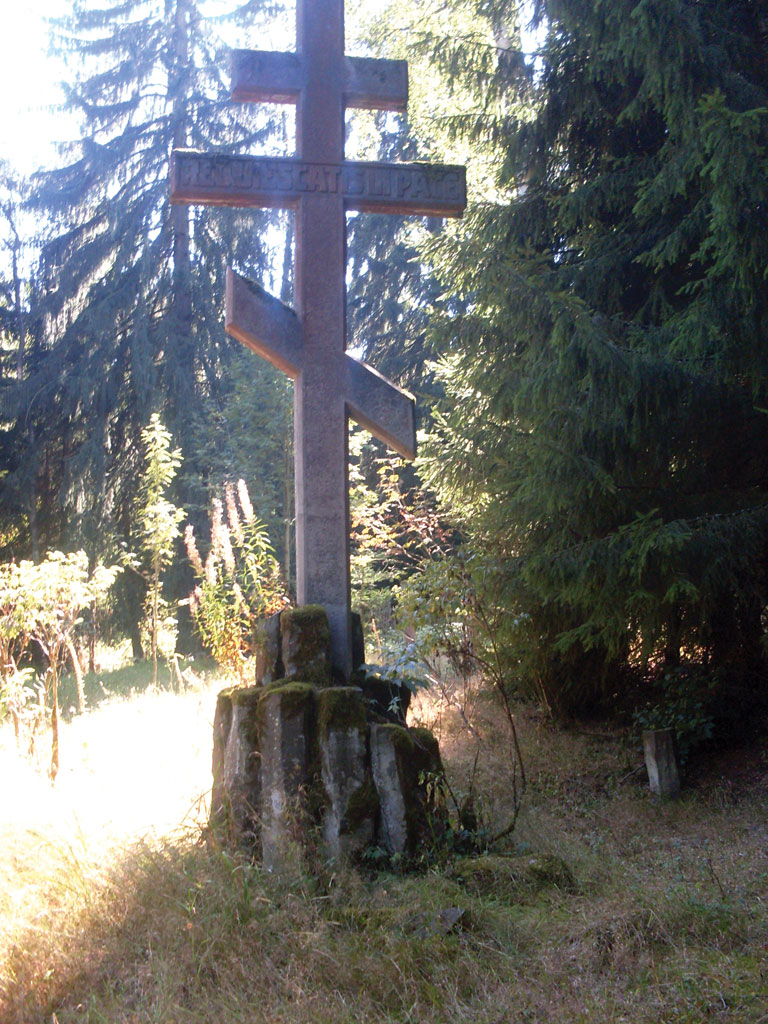- About MoD
Minister and Associates
- Minister
- State Secretary
- Assistant Ministers
- Secretary of the Ministry of Defence
Sectors
- Defence Policy Sector
- Human Resources Sector
- Material Resources Sector
- Budget and Finanance Sector
- Sector for Infrastructure and Hospitality Services
- SAF
- Documents
- Services
- Sport
- Archive
- Contacts
Serbian military cemetery in the Czech Republic
 Until recently, military cemetery "Zejtinlik " in Thessaloniki was long considered the final resting place of Serbian warriors, the Serbian military cemetery in Jindrihovici, was discovered in the former Austro-Hungarian camp Hajnrisgrin, which existed from 1915 to 1918 on the territory of today's Czech Republic.
Until recently, military cemetery "Zejtinlik " in Thessaloniki was long considered the final resting place of Serbian warriors, the Serbian military cemetery in Jindrihovici, was discovered in the former Austro-Hungarian camp Hajnrisgrin, which existed from 1915 to 1918 on the territory of today's Czech Republic.According to Dr. Vidoje Golubovic, research fellow of the Institute of International Politics and Economics, who first came up with that figure, according to the first record in the cemetery in Jindrihovici some 7,100 Serbian soldiers and prisoners were buried there. However, subsequent research into the archives in the Czech Republic, the data suggests that this numbers was actually 8.700 .
- Camp Hajnrisgrin admitted more than 40,000 prisoners from Serbia, Russia, Ukraine and fewer Italians prisoners of the Western Front in Europe. The prisoners were mostly soldiers and civilians from Serbia, who got there after the retreat to Albania , and a number of working-age inmates was transferred from other camps , mainly Arada, Doboj and other camps throughout the Austro-Hungarian Empire - explains Golubovic.
He points out that, unlike other camps, prisoners were not shot here.
- Due to exhaustion and malnutrition typhoid broke out and such similar diseases characteristic of life in such circumstances, which is why people were dying en masse. They were buried in two cemeteries, in one Christian - Orthodox Serbs and Russians were buried, and the Catholic Italians were buried in the other - Dr. Golubovic said, adding that the deceased were first buried in graves with wooden crosses with the rites of priests, until people started dying in large numbers when first mass graves appeared, with 20 inmates buried in one grave.
After the war, in memory of the terrible fate of the inmates who died several common crypto mausoleums were placed where the remains of Serb throughout the camps in Czechoslovakia were collected. The mausoleum opened to the public of 8 July 1932.
According to the Geneva Convention, military cemeteries are protected for the period of hundred years.
2014 is the very year when this period expires and the monuments in the Czech Republic will no longer be under protection so it is important to draw the attention of the public to this information. However there is not enough information about the camp in Jindrihovici, unfortunately, our history, and publications , and the media do not pay due attention to the fact that this cemetery is bigger than " Zejtinlik " – as Golubovic concludes.
- About MoD
- Jurisdiction
- Organisation scheme
- Description of duties
- Minister and Associates
- Minister
- State Secretary
- Assistant Ministers
- Secretary of the Ministry of Defence
- Sectors
- Defence Policy Sector
- Human Resources Sector
- Material Resources Sector
- Budget and Finanance Sector
- Sector for Infrastructure and Hospitality Services
- Special Internal Units
- Office of the Minister of Defence
- Secretariat
- Military Attorney's Office
- Administrative Bodies within MoD
- Defence Inspectorate
- Military Intelligence Agency
- Military Security Agency
- Autonomous Departments
- Public Relations Department
- Military Healthcare Department
- Higher Education Institution
- Defence University
- Specific internal units
- Inspector General of the Services
- Internal Audit Section
- SAF
- Documents
- Services
- Sport
- Archive
- Contacts

